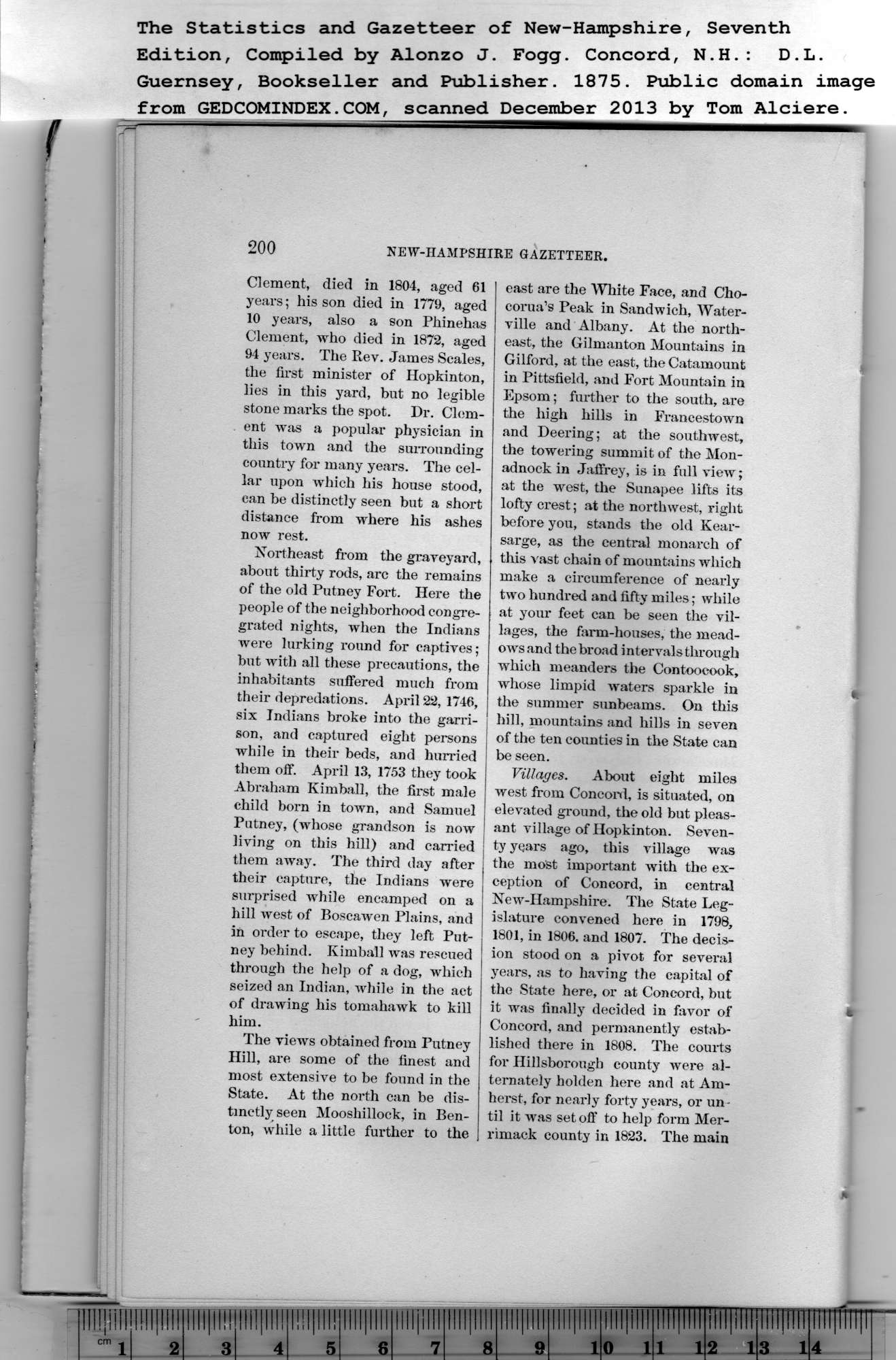|
Clement, died in 1804, aged 61
years; his son died in 1779, aged
10 years, also a son Phinehas
Clement, who died in 1872, aged
94 years. The Rev. James Scales,
the first minister of Hopkinton,
lies in this yard, but no legible
stone marks the spot. Dr. Clem-
ent was a popular physician in
this town and the surrounding
country for many years. The cel-
lar upon which his house stood,
can be distinctly seen hut a short
distance from where his ashes
now rest.
Northeast from the graveyard,
about thirty rods, arc the remains
of the old Putney Fort. Here the
people of the neighborhood congre-
grated nights, when the Indians
were lurking round for captives;
hut with all these precautions, the
inhabitants suffered much from
their depredations. April 22, 1746,
six Indians broke into the garri-
son, and captured eight persons
while in their beds, and hurried
them off. April 13, 1753 they took
Abraham Kimball, the first male
child born in town, and Samuel
Putney, (whose grandson is now
living on this hill) and carried
them away. The third day after
their capture, the Indians were
surprised while encamped on a
hill west of Boscawen Plains, and
in order to escape, they left Put-
ney behind. Kimball was rescued
through the help of a dog, which
seized an Indian, while in the act
of drawing his tomahawk to kill
him. |
The views obtained from Putney
Hill, are some of the finest and
most extensive to be found in the
State. At the north can be dis-
tinctly seen Mooshillock, in Ben-
ton, while a little further to the
east are the White Face, and Cho-
corua’s Peak in Sandwich, Water-
ville and Albany. At the north-
east, the Gilmanton Mountains in
Gilford, at the east, the Catamount
in Pittsfield, and Fort Mountain in
Epsom; further to the south, are
the high hills in Francestown
and Deering; at the southwest,
the towering summit of the Mon-
adnock in Jaffrey, is in full view;
at the west, the Sunapee lifts its
lofty crest; at the northwest, right
before you, stands the old Kear-
sarge, as the central monarch of
this vast chain of mountains which
make a circumference of nearly
two hundred and fifty miles; while
at your feet can be seen the vil-
lages, the farm-houses, the mead-
ows and the broad intervals through
which meanders the Contoocook,
whose limpid waters sparkle in
the summer sunbeams. On this
hill, mountains and hills in seven
of the ten counties in the State can
be seen.
Villages. About eight miles
west from Concord, is situated, on
elevated ground, the old but pleas-
ant village of Hopkinton. Seven-
ty years ago, this village was
the most important with the ex-
ception of Concord, in central
New-Hampshire. The State Leg-
islature convened here in 1798,
1801, in 1806. and 1807. The decis-
ion stood on a pivot for several
years, as to having the capital of
the State here, or at Concord, hut
it was finally decided in favor of
Concord, and permanently estab-
lished there in 1808. The courts
for Hillsborough county were al-
ternately holden here and at Am-
herst, for nearly forty years, or un-
til it was set off to help form Mer-
rimack county in 1823. The main |
